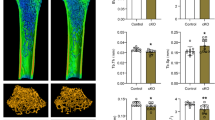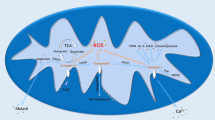Abstract
Sirtuins (SIRTs) are NAD+-dependent deacetylases that catalyze the hydrolysis of acetyl-lysine residues. They play an important role in many physiological and pathophysiological processes, such as the regulation of lifespan and the prevention of metabolic diseases. In this study, we analyzed the effect of resveratrol on the gene expression levels of SIRT1, SIRT3, SIRT4, PGC1α, and NAMPT, as well as its effect on NAD+ and NADH levels, in the liver of non stressed or non impaired wild-type zebrafish. Semiquantative RT-PCR assays showed that resveratrol did not change the mRNA levels of SIRT1 and PGC1α but decreased the expression levels of the SIRT3, SIRT4, and NAMPT genes. The decrease in NAMPT mRNA levels was accompanied by an increase in NADH levels, thereby decreasing the NAD+/H ratio. Taken together, our results suggest that resveratrol plays a modulatory role in the transcription of the NAMPT, SIRT3, and SIRT4 genes. Zebrafish is an interesting tool that can be used to understand the mechanisms of SIRTs and NAMPT metabolism and to help develop therapeutic compounds. However, further investigations using healthy experimental animals are required to study the modulation of the SIRT and NAMPT genes by resveratrol before it is used as a nutraceutical compound in healthy humans.




Similar content being viewed by others
References
Harikumar KB, Aggarwal BB (2008) Resveratrol: a multitargeted agent for age-associated chronic diseases. Cell Cycle 7(8):1020–1035
Howitz KT et al (2003) Small molecule activators of sirtuins extend Saccharomyces cerevisiae lifespan. Nature 425(6954):191–196
Wood JG et al (2004) Sirtuin activators mimic caloric restriction and delay ageing in metazoans. Nature 430(7000):686–689
Valenzano DR et al (2006) Resveratrol prolongs lifespan and retards the onset of age-related markers in a short-lived vertebrate. Curr Biol 16(3):296–300
Jang M et al (1997) Cancer chemopreventive activity of resveratrol, a natural product derived from grapes. Science 275(5297):218–220
Yar AS et al (2010) The effects of resveratrol on cyclooxygenase-1 and cyclooxygenase-2 mRNA and protein levels in diabetic rat kidneys. Mol Biol Rep 37(5):2323–2331
Marques FZ, Markus MA, Morris BJ (2009) Resveratrol: cellular actions of a potent natural chemical that confers a diversity of health benefits. Int J Biochem Cell Biol 41(11):2125–2128
Szkudelska K, Szkudelski T (2010) Resveratrol, obesity and diabetes. Eur J Pharmacol 635:1–8
Patel KR et al (2010) Clinical pharmacology of resveratrol and its metabolites in colorectal cancer patients. Cancer Res 70(19):7392–7399
Hsieh TC, Wu JM (2010) Resveratrol: biological and pharmaceutical properties as anticancer molecule. Biofactors 36:360–369
Baur JA (2010) Biochemical effects of SIRT1 activators. Biochim Biophys Acta 1804(8):1626–1634
Nunes T et al (2009) Pharmacokinetics of trans-resveratrol following repeated administration in healthy elderly and young subjects. J Clin Pharmacol 49(12):1477–1482
Almeida L et al (2009) Pharmacokinetic and safety profile of trans-resveratrol in a rising multiple-dose study in healthy volunteers. Mol Nutr Food Res 53(Suppl 1):S7–S15
Sauve AA et al (2006) The biochemistry of sirtuins. Annu Rev Biochem 75:435–465
Hernick M, Fierke CA (2005) Zinc hydrolases: the mechanisms of zinc-dependent deacetylases. Arch Biochem Biophys 433(1):71–84
Lin SJ, Defossez PA, Guarente L (2000) Requirement of NAD and SIR2 for life-span extension by calorie restriction in Saccharomyces cerevisiae. Science 289(5487):2126–2128
Michan S, Sinclair D (2007) Sirtuins in mammals: insights into their biological function. Biochem J 404(1):1–13
Haigis MC, Guarente LP (2006) Mammalian sirtuins—emerging roles in physiology, aging, and calorie restriction. Genes Dev 20(21):2913–2921
Feige JN, Auwerx J (2008) Transcriptional targets of sirtuins in the coordination of mammalian physiology. Curr Opin Cell Biol 20(3):303–309
Shi T et al (2005) SIRT3, a mitochondrial sirtuin deacetylase, regulates mitochondrial function and thermogenesis in brown adipocytes. J Biol Chem 280(14):13560–13567
Haigis MC et al (2006) SIRT4 inhibits glutamate dehydrogenase and opposes the effects of calorie restriction in pancreatic beta cells. Cell 126(5):941–954
Palacios OM et al (2009) Diet and exercise signals regulate SIRT3 and activate AMPK and PGC-1alpha in skeletal muscle. Aging 1(9):771–783
Lombard DB et al (2007) Mammalian Sir2 homolog SIRT3 regulates global mitochondrial lysine acetylation. Mol Cell Biol 27(24):8807–8814
Imai S, Guarente L (2010) Ten years of NAD-dependent SIR2 family deacetylases: implications for metabolic diseases. Trends Pharmacol Sci 31(5):212–220
Hallows WC, Lee S, Denu JM (2006) Sirtuins deacetylate and activate mammalian acetyl-CoA synthetases. Proc Natl Acad Sci USA 103(27):10230–10235
Schlicker C et al (2008) Substrates and regulation mechanisms for the human mitochondrial sirtuins Sirt3 and Sirt5. J Mol Biol 382(3):790–801
Sundaresan NR et al (2008) SIRT3 is a stress-responsive deacetylase in cardiomyocytes that protects cells from stress-mediated cell death by deacetylation of Ku70. Mol Cell Biol 28(20):6384–6401
Shulga N, Wilson-Smith R, Pastorino JG (2010) Sirtuin-3 deacetylation of cyclophilin D induces dissociation of hexokinase II from the mitochondria. J Cell Sci 123(Pt 6):894–902
Shi T, Fan GQ, Xiao SD (2010) SIRT3 reduces lipid accumulation via AMPK activation in human hepatic cells. J Dig Dis 11(1):55–62
Ahn BH et al (2008) A role for the mitochondrial deacetylase Sirt3 in regulating energy homeostasis. Proc Natl Acad Sci USA 105(38):14447–14452
Ahuja N et al (2007) Regulation of insulin secretion by SIRT4, a mitochondrial ADP-ribosyltransferase. J Biol Chem 282(46):33583–33592
Stanley CA (2004) Hyperinsulinism/hyperammonemia syndrome: insights into the regulatory role of glutamate dehydrogenase in ammonia metabolism. Mol Genet Metab 81(Suppl 1):S45–S51
Nasrin N et al (2010) SIRT4 regulates fatty acid oxidation and mitochondrial gene expression in liver and muscle cells. J Biol Chem 285:31995–32002
Samal B et al (1994) Cloning and characterization of the cDNA encoding a novel human pre-B-cell colony-enhancing factor. Mol Cell Biol 14(2):1431–1437
Revollo JR et al (2007) Nampt/PBEF/Visfatin regulates insulin secretion in beta cells as a systemic NAD biosynthetic enzyme. Cell Metab 6(5):363–375
Yang H et al (2007) Nutrient-sensitive mitochondrial NAD+ levels dictate cell survival. Cell 130(6):1095–1107
Mukherjee S et al (2009) Expression of the longevity proteins by both red and white wines and their cardioprotective components, resveratrol, tyrosol, and hydroxytyrosol. Free Radic Biol Med 46(5):573–578
Hayashida S et al (2010) Fasting promotes the expression of SIRT1, an NAD+ -dependent protein deacetylase, via activation of PPARalpha in mice. Mol Cell Biochem 339(1–2):285–292
Imai S, Kiess W (2009) Therapeutic potential of SIRT1 and NAMPT-mediated NAD biosynthesis in type 2 diabetes. Front Biosci 14:2983–2995
Zon LI, Peterson RT (2005) In vivo drug discovery in the zebrafish. Nat Rev Drug Discov 4(1):35–44
Pichler FB et al (2003) Chemical discovery and global gene expression analysis in zebrafish. Nat Biotechnol 21(8):879–883
Barbazuk WB et al (2000) The syntenic relationship of the zebrafish and human genomes. Genome Res 10(9):1351–1358
Souto AA et al (2001) Determination of trans-resveratrol concentrations in Brazilian Red Wines by HPLC. J Food Compos Anal 14:441–445
Chen WY et al (2004) Expression of metallothionein gene during embryonic and early larval development in zebrafish. Aquat Toxicol 69(3):215–227
Kong X et al (2010) Sirtuin 3, a new target of PGC-1alpha, plays an important role in the suppression of ROS and mitochondrial biogenesis. PLoS One 5(7):e11707
Bowman TV, Zon LI (2010) Swimming into the future of drug discovery: in vivo chemical screens in zebrafish. ACS Chem Biol 5(2):159–161
Rosemberg DB et al (2010) Taurine prevents enhancement of acetylcholinesterase activity induced by acute ethanol exposure and decreases the level of markers of oxidative stress in zebrafish brain. Neuroscience 171(3):683–692
Pereira TC et al (2011) Zebrafish as a model organism to evaluate drugs potentially able to modulate sirtuin expression. Zebrafish 8(1):9–16
Baur JA et al (2006) Resveratrol improves health and survival of mice on a high-calorie diet. Nature 444(7117):337–342
Lagouge M et al (2006) Resveratrol improves mitochondrial function and protects against metabolic disease by activating SIRT1 and PGC-1alpha. Cell 127(6):1109–1122
Franco JG et al (2010) Resveratrol (RSV) reduces lipid peroxidation and increases sirtuin1 (SIRT1) expression in adult animals programmed by neonatal protein restriction. J Endocrinol 207(3):319–328
Barger JL et al (2008) Short-term consumption of a resveratrol-containing nutraceutical mixture mimics gene expression of long-term caloric restriction in mouse heart. Exp Gerontol 43(9):859–866
Beher D et al (2009) Resveratrol is not a direct activator of SIRT1 enzyme activity. Chem Biol Drug Des 74(6):619–624
Pacholec M et al (2010) SRT1720, SRT2183, SRT1460, and resveratrol are not direct activators of SIRT1. J Biol Chem 285(11):8340–8351
Barger JL et al (2008) A low dose of dietary resveratrol partially mimics caloric restriction and retards aging parameters in mice. PLoS One 3(6):e2264
Chen D et al (2008) Tissue-specific regulation of SIRT1 by calorie restriction. Genes Dev 22(13):1753–1757
Oliva J et al (2008) Sirt1 is involved in energy metabolism: the role of chronic ethanol feeding and resveratrol. Exp Mol Pathol 85(3):155–159
Rayalam S et al (2008) Resveratrol induces apoptosis and inhibits adipogenesis in 3T3–L1 adipocytes. Phytother Res 22(10):1367–1371
Hirschey MD et al (2010) SIRT3 regulates mitochondrial fatty-acid oxidation by reversible enzyme deacetylation. Nature 464(7285):121–125
Chen YR et al (2010) Calorie restriction on insulin resistance and expression of SIRT1 and SIRT4 in rats. Biochem Cell Biol 88(4):715–722
Zhang HS et al (2010) Nicotinamide phosphoribosyltransferase/sirtuin 1 pathway is involved in human immunodeficiency virus type 1 Tat-mediated long terminal repeat transactivation. J Cell Biochem 110(6):1464–1470
Kelly G (2010) A review of the sirtuin system, its clinical implications, and the potential role of dietary activators like resveratrol: part 1. Altern Med Rev 15(3):245–263
Dahl TB et al (2007) Increased expression of visfatin in macrophages of human unstable carotid and coronary atherosclerosis: possible role in inflammation and plaque destabilization. Circulation 115(8):972–980
Rasouli N, Kern PA (2008) Adipocytokines and the metabolic complications of obesity. J Clin Endocrinol Metab 93(11 Suppl 1):S64–S73
Sommer G et al (2008) Visfatin/PBEF/Nampt: structure, regulation and potential function of a novel adipokine. Clin Sci 115(1):13–23
Dahl TB et al (2010) Intracellular nicotinamide phosphoribosyltransferase protects against hepatocyte apoptosis and is down-regulated in nonalcoholic fatty liver disease. J Clin Endocrinol Metab 95(6):3039–3047
de Boer JF et al (2009) Plasma levels of PBEF/Nampt/visfatin are decreased in patients with liver cirrhosis. Am J Physiol Gastrointest Liver Physiol 296(2):G196–G201
Acknowledgments
This work was supported by Conselho Nacional de Desenvolvimento Científico e Tecnológico (CNPq), and Coordenação de Aperfeiçoamento de Pessoal de Nível Superior (CAPES). The authors would like to thank lab colleagues for technical assistance.
Author information
Authors and Affiliations
Corresponding author
Rights and permissions
About this article
Cite this article
Schirmer, H., Pereira, T.C.B., Rico, E.P. et al. Modulatory effect of resveratrol on SIRT1, SIRT3, SIRT4, PGC1α and NAMPT gene expression profiles in wild-type adult zebrafish liver. Mol Biol Rep 39, 3281–3289 (2012). https://doi.org/10.1007/s11033-011-1096-4
Received:
Accepted:
Published:
Issue Date:
DOI: https://doi.org/10.1007/s11033-011-1096-4




